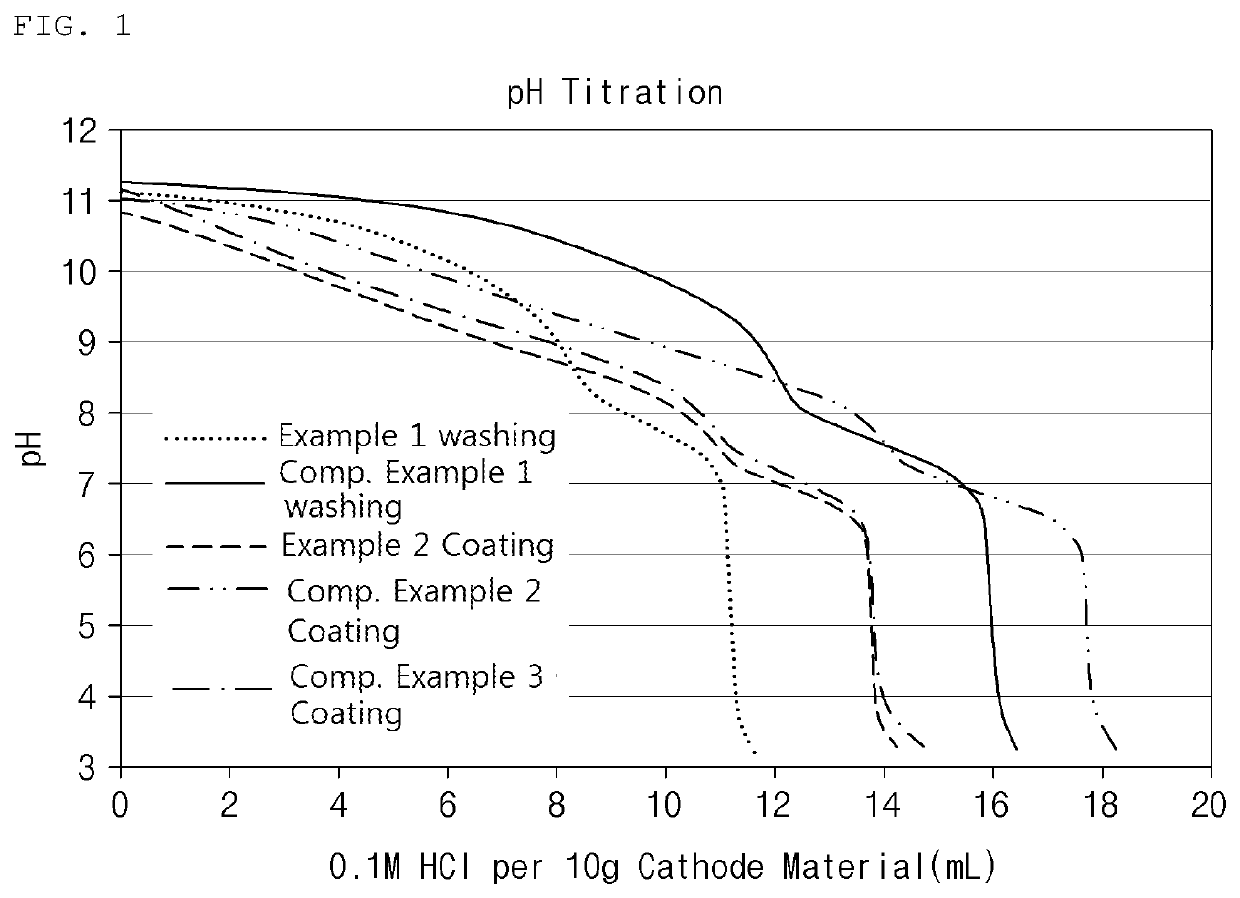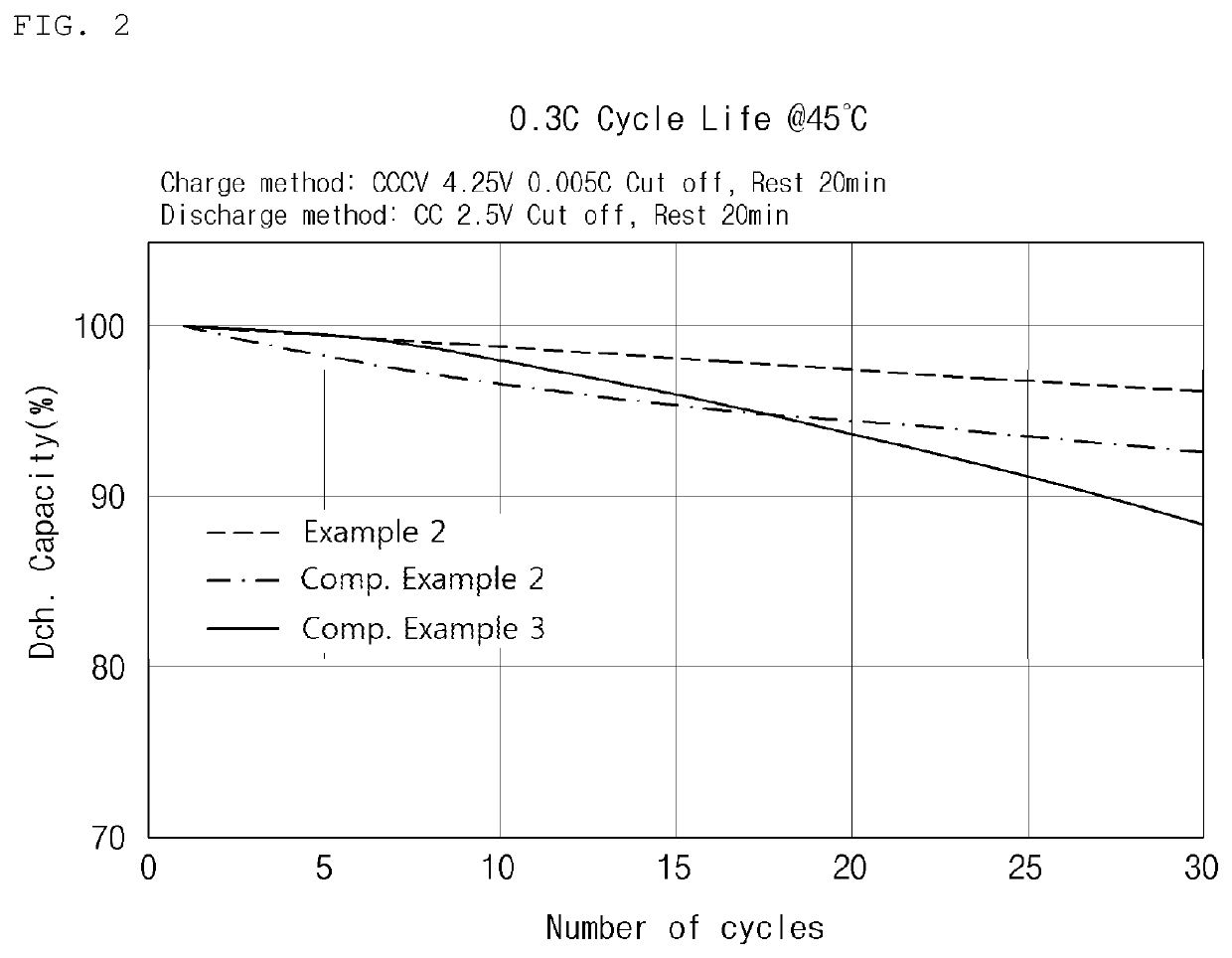Positive electrode active material, preparation method thereof, positive electrode including same and secondary battery
a technology of active materials and positive electrodes, which is applied in the field of preparation of positive electrode active materials, and the preparation of positive electrodes including the same and secondary batteries, can solve the problems of poor thermal stability, limited use of a large amount of licoo, and poor thermal properties of licoosub>2, so as to suppress the generation of defects and achieve sufficient cleaning effect.
- Summary
- Abstract
- Description
- Claims
- Application Information
AI Technical Summary
Benefits of technology
Problems solved by technology
Method used
Image
Examples
example 1
[0114]Ni0.9Co0.08Mn0.02(OH)2 and LiOH.H2O were uniformly mixed in a molar ratio of 1:1.05, and the mixture was fired at 740° C. for 12 hours to prepare a lithium composite transition metal oxide LiNi0.9Co0.08Mn0.02O2 (D50=10 μm).
[0115]140 g of the lithium composite transition metal oxide and 0.7 g of a surfactant (a product containing 17.5 wt % of a mixture of sodium alkyl ether sulfate, sodium olefin sulfonate, and dimethyldodesil polyoxyethylene glycol amine oxide) were added to 140 g of water, and the mixture was stirred and then washed for 15 minutes. Thereafter, the washed mixture was dried at 150° C. to obtain a positive electrode active material A.
example 2
[0116]The positive electrode active material A prepared in Example 1 was mixed with H3BO3, and the mixture was heat treated at 300° C. for 3 hours to obtain a positive electrode active material B having a coating layer including a B element.
experimental example 1
Evaluation of Lithium By-Products Content
[0123]The positive electrode active materials prepared in each of Examples 1 and 2 and Comparative Examples 1 to 2 were dissolved in water, and then titrated with a hydrochloric acid to measure the content of lithium by-products included in positive electrode active materials. The measurement results are shown in FIG. 1.
[0124]As shown in FIG. 1, in the case of the positive electrode active materials prepared in each of Examples 1 and 2, it was confirmed that the amount of hydrochloric acid required for the titration was less than that of the positive electrode active materials prepared in each of Comparative Examples 1 to 3, which indicates a lower content of lithium by-products.
[0125]The contents of lithium by-products in the positive electrode active materials calculated on the basis of FIG. 1 are as described in [Table 1].
[0126]
TABLE 1Content of lithium by-products (wt %)Example 10.343Example 20.403Comparative Example 10.474Comparative Exa...
PUM
| Property | Measurement | Unit |
|---|---|---|
| electrical conductivity | aaaaa | aaaaa |
| electrical conductivity | aaaaa | aaaaa |
| electrical conductivity | aaaaa | aaaaa |
Abstract
Description
Claims
Application Information
 Login to View More
Login to View More - R&D
- Intellectual Property
- Life Sciences
- Materials
- Tech Scout
- Unparalleled Data Quality
- Higher Quality Content
- 60% Fewer Hallucinations
Browse by: Latest US Patents, China's latest patents, Technical Efficacy Thesaurus, Application Domain, Technology Topic, Popular Technical Reports.
© 2025 PatSnap. All rights reserved.Legal|Privacy policy|Modern Slavery Act Transparency Statement|Sitemap|About US| Contact US: help@patsnap.com


